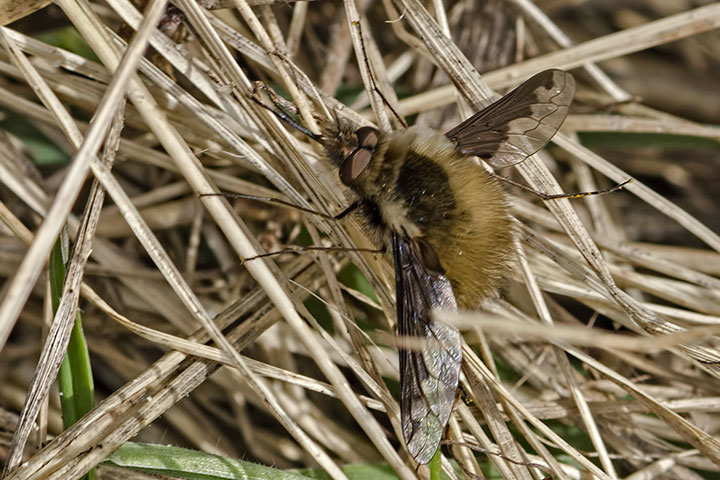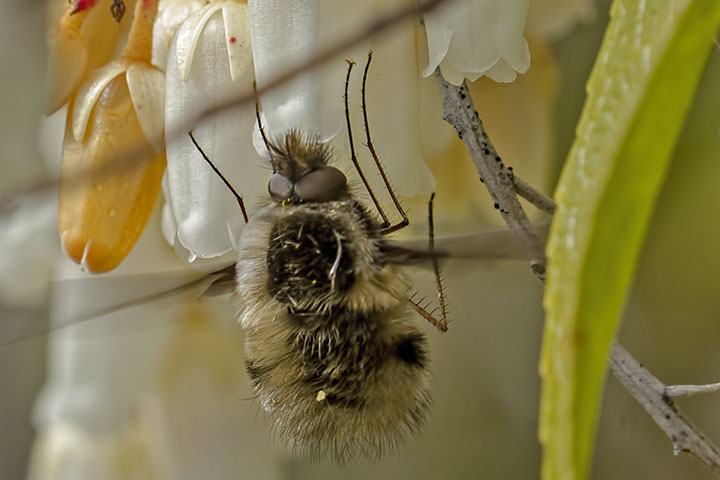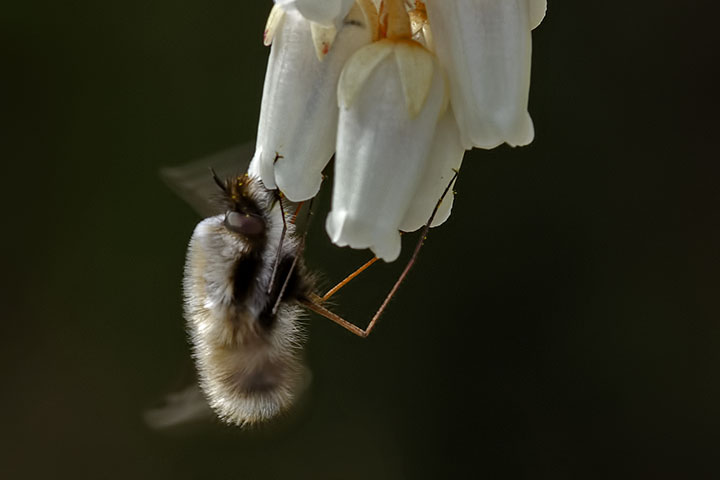The bombylius looks like something that might be created by a child’s toy maker: fuzzy, large eyes, spindly legs.
Yet, it is real and is visiting everyone’s yard right now—albeit a rather small object to descry. Bombylius is a genus of flies that mimics bees, presumably as a defence against being eaten by birds. Whatever the reason, it is a striking little creature, that can be seen around here in the months of April and May, and then it is gone.
There are a quite a few different species of bombylius in British Columbia and I don’t know which one appears in these pictures. Indeed, I don’t even know if the three pictures show the same species. Alas, there are not very many local fly experts to consult on this matter.
A bombylius rests on some of last year’s dried grass. This momentary inactivity enables one to see the black and transparent wings, things that are usually in rapid motion. Its long proboscis, used for collecting nectar from flowers, is apparent here. This one could very well be the species, Bombylius major.

On this occasion, the rapidly moving wings hold the fly in position as its proboscis penetrates the flower.

The bombylius: a ball of fur hanging from flowers—what a delight.


Alistar, this post just confirms what I’ve been thinking for some time…your blog could do well in the “spin-off” toy realm! What child would not dream of having their own Bombylius stuffy toy, or perhaps a Lacunosus themed lunch bucket. Father’s day is fast approaching, perhaps a Guttation BBQ apron for the old fart…the mind boggles!
Doug, if we are going the branding route, wouldn’t lacunosus be better as a choice for an infant formula?
Ha, ha of course! Unless one is lacunosus intolerant…
Splendid photos, Alistair. So good to see our insects friends again, as we’re not yet enjoying bee or bee fly activity up north yet.
Those are great photos! I have seen this fly around the fruit tree blossoms and the lilacs. I have managed to take OK pictures of them flying but they never seem to sit still for very long. I like the way they hold their legs out (almost “backwards”) when they fly.